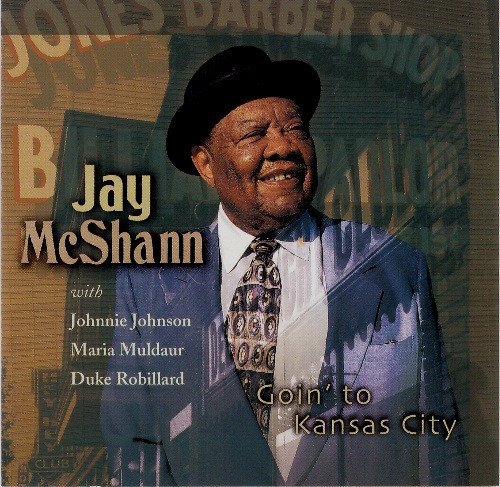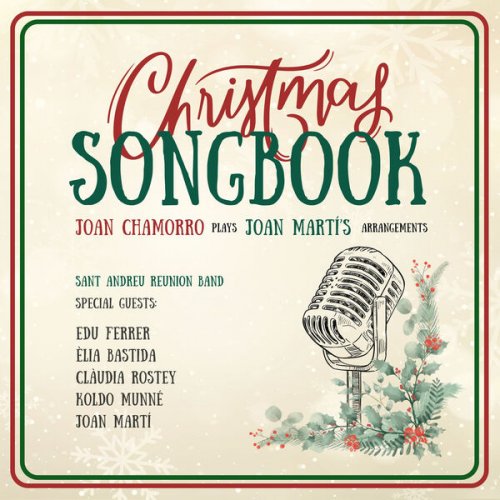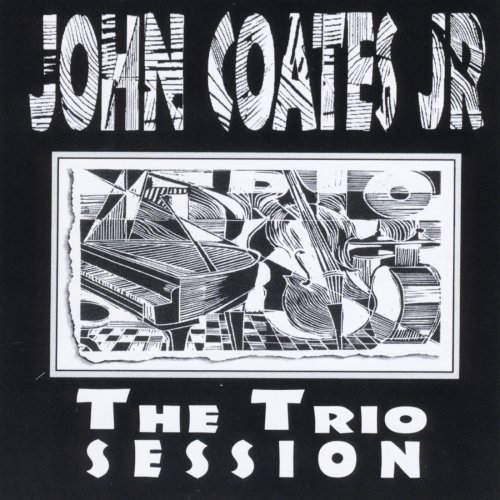Jay McShann - Goin' to Kansas City (2003)

Artist: Jay McShann
Title: Goin' to Kansas City
Year Of Release: 2003
Label: Stony Plain Records [SPCD 1286]
Genre: Jazz, Blues
Quality: FLAC (tracks+.cue, log)
Total Time: 1:13:58
Total Size: 358 MB
WebSite: Album Preview
Tracklist: Title: Goin' to Kansas City
Year Of Release: 2003
Label: Stony Plain Records [SPCD 1286]
Genre: Jazz, Blues
Quality: FLAC (tracks+.cue, log)
Total Time: 1:13:58
Total Size: 358 MB
WebSite: Album Preview
01. Kansas City (2:27)
02. Trouble in Mind (3:03)
03. When I Grow Too Old to Dream (2:31)
04. Nasty Attitude (2:12)
05. My Chile (3:29)
06. Wrong Neighborhood (4:10)
07. Just for You (3:49)
08. Confessin' the Blues (3:08)
09. Kansas City (Revisited) (5:43)
10. Jay and Johnnie Conversation (1:10)
11. Some Kinda Crazy (2:42)
12. One Woman's Man (3:42)
13. Doo Wah Doo (2:34)
14. 'Fore Day Rider (3:03)
15. Ain't Nobody's Business (3:01)
16. The Fish Fry Boogie (3:11)
17. Crying Won't Make Me Stay (4:12)
18. Interview (Jay at Home and at This Piano) (19:51)
Jay McShann secured a lasting place in jazz history on April 30, 1941, when he became the first bandleader to usher Charlie Parker into a studio for a commercial recording session. For years, that was how McShann was remembered, if at all—as an early benefactor of the most influential figure in modern jazz. Shamefully, it took the jazz literati three decades to recognize Bird's old boss as a dynamic force himself.
McShann's advocacy of Parker was hardly his only distinction as a bandleader. A riffing powerhouse in the Kansas City mode of Benny Moten, Count Basie, and Andy Kirk, the Jay McShann Orchestra was the last of the Southwestern "territory" outfits to go national. Its soloists, Parker excepted, may have lacked the charisma of their Basie counterparts, but its arrangements (especially those by Skippa Hall and William Scott) were frequently more imaginative than the Basie band's while no less rough-and-tumble.
Going to Kansas City—arguably the finest flower of McShann’s late bloom—was recorded in 1972, seven years before his appearance in the film The Last of the Blue Devils solidified his rank among jazz elders. In his liner notes for the original MJR release, the producer Bill Weilbacher explained the inspiration for teaming McShann with Buddy Tate and the late Julian Dash: "First, because tenor saxophones can be terrific blues instruments and blues and McShann go together; second, because tenor saxophones are great riffing instruments and riff tunes are a very important part of the Kansas City tradition; third, because two tenors with a rhythm section is a rather unusual instrumentation and we thought that it would likely stimulate the players in its novelty; and fourth, because we imagined that Jay McShann's right hand would function very much like a brass choir in this instrumentation, tending, therefore, to put this aspect of his style into focus."
Going to Kansas City was a treasure in 1972, in part because albums by McShann were then so scarce. It remains a treasure, even though there is no longer a shortage of McShann on record. Music as savvy, exuberant, and timeless as this will always be a rare commodity.
McShann's advocacy of Parker was hardly his only distinction as a bandleader. A riffing powerhouse in the Kansas City mode of Benny Moten, Count Basie, and Andy Kirk, the Jay McShann Orchestra was the last of the Southwestern "territory" outfits to go national. Its soloists, Parker excepted, may have lacked the charisma of their Basie counterparts, but its arrangements (especially those by Skippa Hall and William Scott) were frequently more imaginative than the Basie band's while no less rough-and-tumble.
Going to Kansas City—arguably the finest flower of McShann’s late bloom—was recorded in 1972, seven years before his appearance in the film The Last of the Blue Devils solidified his rank among jazz elders. In his liner notes for the original MJR release, the producer Bill Weilbacher explained the inspiration for teaming McShann with Buddy Tate and the late Julian Dash: "First, because tenor saxophones can be terrific blues instruments and blues and McShann go together; second, because tenor saxophones are great riffing instruments and riff tunes are a very important part of the Kansas City tradition; third, because two tenors with a rhythm section is a rather unusual instrumentation and we thought that it would likely stimulate the players in its novelty; and fourth, because we imagined that Jay McShann's right hand would function very much like a brass choir in this instrumentation, tending, therefore, to put this aspect of his style into focus."
Going to Kansas City was a treasure in 1972, in part because albums by McShann were then so scarce. It remains a treasure, even though there is no longer a shortage of McShann on record. Music as savvy, exuberant, and timeless as this will always be a rare commodity.

![Posey Royale - The Real Low-Down (2025) [Hi-Res] Posey Royale - The Real Low-Down (2025) [Hi-Res]](https://www.dibpic.com/uploads/posts/2025-12/1765494723_zbd6vfngwwskb_600.jpg)

![Club Bolero, Armik - A Day in Brazil (2007) [Hi-Res] Club Bolero, Armik - A Day in Brazil (2007) [Hi-Res]](https://img.israbox.com/img/2025-12/15/5l607nskcv4xb0n237d8ngs7q.jpg)
![Tomasz Stańko - Unit (Polish Radio Sessions vol. 2/6) (2025) [Hi-Res] Tomasz Stańko - Unit (Polish Radio Sessions vol. 2/6) (2025) [Hi-Res]](https://www.dibpic.com/uploads/posts/2025-12/1765790300_cover.jpg)


![Keith Oxman - Home (2025) [Hi-Res] Keith Oxman - Home (2025) [Hi-Res]](https://www.dibpic.com/uploads/posts/2025-12/1765387688_hltlbo3s1g1aa_600.jpg)
![Tomasz Stańko - Piece for Diana and Other Ballads (Polish Radio Sessions vol. 1/6) (2025) [Hi-Res] Tomasz Stańko - Piece for Diana and Other Ballads (Polish Radio Sessions vol. 1/6) (2025) [Hi-Res]](https://www.dibpic.com/uploads/posts/2025-12/1765788761_cover.jpg)